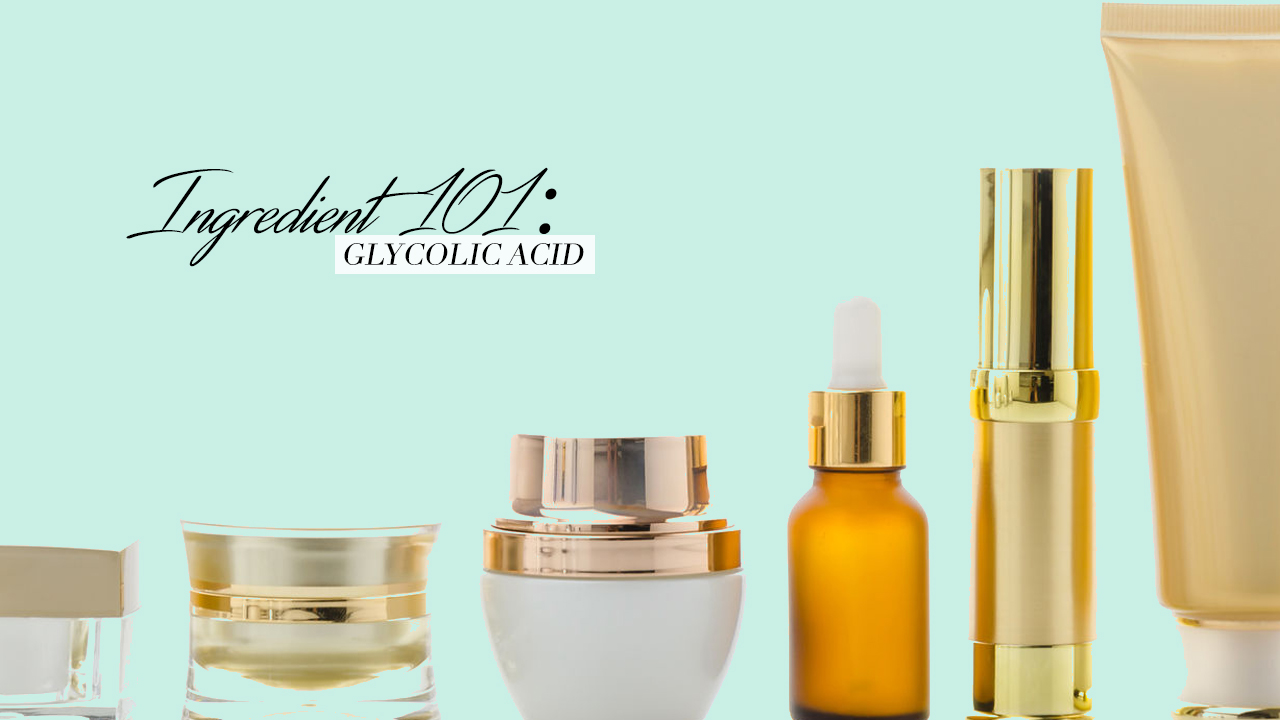
By Cai Maroket
When one thinks of acids, it generally isn’t immediately associated with skin…or anything that has to do with a human body, let alone a face. Acids will definitely trigger memories of high school chemistry classes, lab coats and other protective gear and many words of caution from teachers. Everybody has been taught that acids are volatile things to be handled with great care, and that they are dangerous, used by soap opera (and real life) villains to blind and assault their hapless victims, disfiguring their faces beyond recognition. So how on earth did people come up with the brilliant idea of adding acids to skincare?
There’s a wide array of acid-centric products, primarily used for peeling—again, another word that’s weird to associate with skin—and the most impressive of them all is glycolic acid.
What is it?
Glycolic acid is a type of AHA (alpha hydroxy acid) naturally derived from sugar canes. As with the general public’s perception of what acids do, glycolic acid dissolves dead skin cells along with sebum and grime by loosening up the glue-like substance that binds the top layer of skin cells to each other. It also has the smallest molecules out of all the AHAs, making it the easiest for our skin to absorb. This is why it is the most preferred acid by doctors for professional peels and anti-aging treatments.
What it can do for you
The description may sound absolutely terrifying to the average person but glycolic acid is probably one of the best things you can add to your regimen, especially for those with acne-prone or mature skin. Since it rids the surface of your skin of sebum and grime and unblocks your pores, it not only clears skin of blackheads but also cystic acne. It’s proven to be effective at battling acne, as well as treating the scars and pigmentation that acne leaves behind because of its exfoliating properties—so if this is one of your main concerns, you can start off with a gentle peeling gel like Detclear Bright and Peel Mixed Fruits. It also lightens other forms of discoloration, like sun spots and age spots, which is why it’s such a popular ingredient for anti-aging formulas.
Speaking of anti-aging, glycolic acid not only affects pigmentation but also accelerates cell turnover, which reveals a brighter, even-toned visage with the appearance of smaller pores, and helps reduce fine lines and signs of aging. Since glycolic acid acts as a water-binding agent and regenerates collagen, you can expect plump, youthful skin in no time, especially when used in serum form like Pixi Skintreats Overnight Glow Serum.
While it may sound like a catch-all product from the gods, it’s for the best if you can calm your expectations and understand that glycolic acid cannot miraculously make deep-set wrinkles disappear. But that alone shouldn’t deter you from promises of glowing skin with less fine lines, blemishes and sebum production that will be kept under control!
Things to keep in mind
Take into consideration that since it is an acid, a glycolic acid product with high concentration shouldn’t be used in conjunction with other AHAs, products with Vitamin A such as Accutane (though a mild retinol should be no problem. Consult a professional first), and other forms of chemical peels. If using within the confines of your own home, stick to products that contain about 2% to 10%, unless you want blotchy, irritated skin. Anything above that should be left with professionals as concentrations of 20% and above are what is used for clinical peels. Just because the number is higher doesn’t mean it will perform better, though when used in proper amounts can be layered on. No issues if you’d like to use a glycolic acid serum after a glycolic acid facial wash like Vichy 3-in-1 Cleanser.
Also, the use of glycolic acid will make your skin a bit more sensitive to the sun, so investing in a good sunscreen and applying it religiously before stepping foot outdoors is advised to avoid adding to the pigmentation you are trying to get rid of.
That said, forget about your preconceptions of what acids do, introduce glycolic acid to your beauty routine and bid adieu to lackluster skin.
There is no product to show



